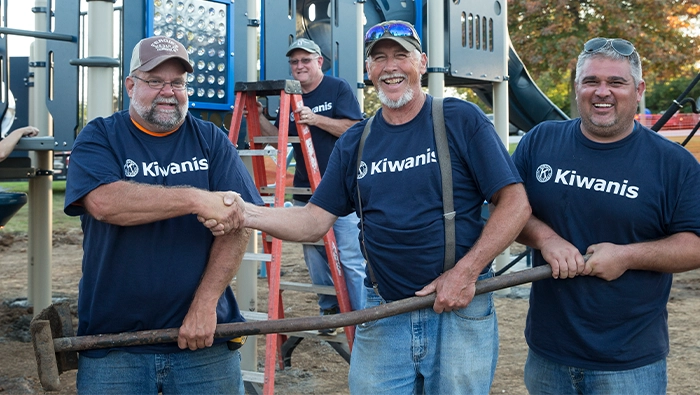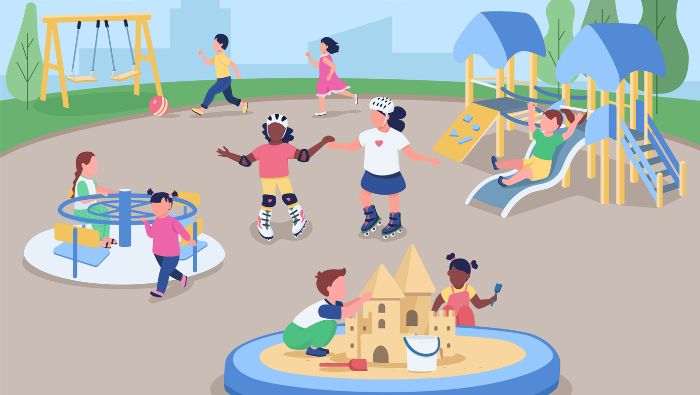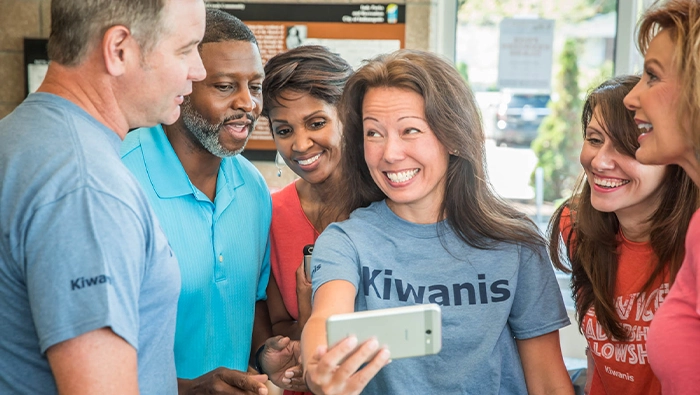From October through December, smaller clubs made a big impact through the Kiwanis Children’s Fund.
By Erin Chandler
In October, November and December 2024, Kiwanis clubs around the world received Kiwanis Children’s Fund microgrants. Available for clubs with 35 members or fewer, microgrants recently helped clubs complete projects that brought clothing and other essential items to people facing weather adversity, books to community libraries and classrooms, and more. These projects might be smaller in scale, but they will make a big impact. The following three projects highlight some of the ways Kiwanis clubs are using microgrants to help young people in need keep up with their peers in the Kiwanis cause areas of education and literacy, health and nutrition, and youth leadership development.
Health and nutrition
Kids’ Fun Zone
The Kiwanis Club of the Coast Fork, Oregon, U.S., plans to promote the physical and emotional health of some of the most vulnerable kids in their community. A Children’s Fund microgrant will help purchase a swing set, sandbox, monkey bars and more play equipment for a local center that serves people recovering from homelessness. Club members will take part in installing and inspecting the equipment. The “Kids’ Fun Zone” will let the kids at the center play, exercise and socialize in a safe and stable environment.
Education and literacy
Library and reading center
Many students at Escuelo Nuevo Belén in Panama feel the effects of their community’s high poverty rate in their educational attainment — some struggle with reading and writing, while others never complete their primary or secondary education. By transforming part of the school into a library and learning center, the Kiwanis Club of El Águila De Panamá hopes to change approximately 2,500 of these students’ futures. A Children’s Fund microgrant will help to remodel the space, with new tables, chairs, bookshelves and other furnishings. The club also plans to clean and paint, install new lighting and air conditioning, purchase books and train teachers and volunteers to jumpstart kids’ love of reading and learning.
Youth leadership development
Suited Seniors
When the Kiwanis Club of Duluth-Norcross, Georgia, U.S., learned that students who lack financial resources and mentorship are less likely to pursue career opportunities requiring interviews, they did something about it. In partnership with local businesses, the club will donate professional clothing items for approximately 50 students across five local high schools. They will also organize workshops on interview techniques, résumé writing, personal branding, goal-setting and other tactics to build students’ confidence and readiness as they enter the next phase of their lives.
How you can help
To learn more about Kiwanis Children’s Fund microgrants, visit kiwanis.org/microgrant-program.
If you want to help the Children’s Fund provide grants like these that reach children around the world, you can make a gift to The Possibility Project. Your club can also apply for a grant to help kids in your community today.



